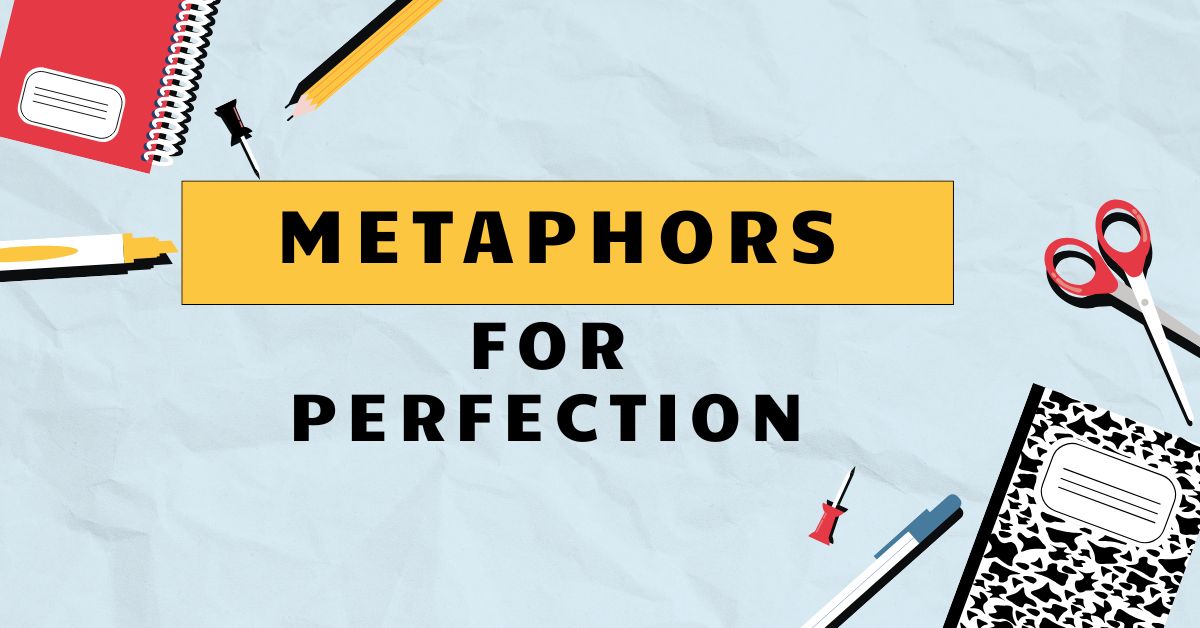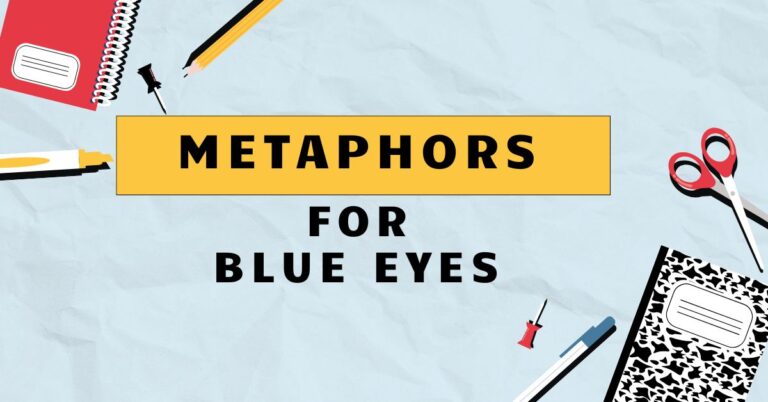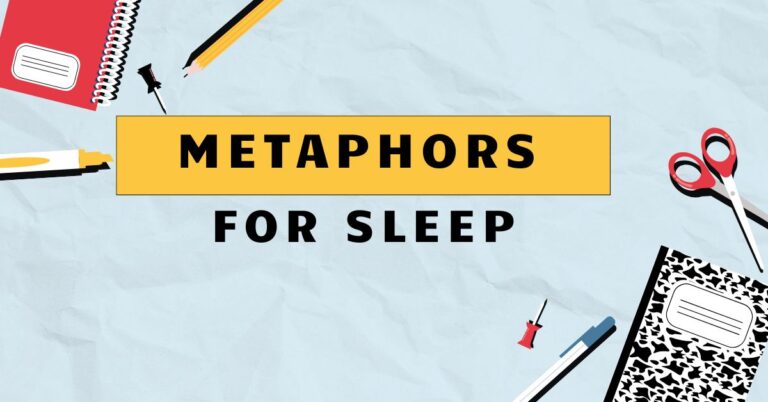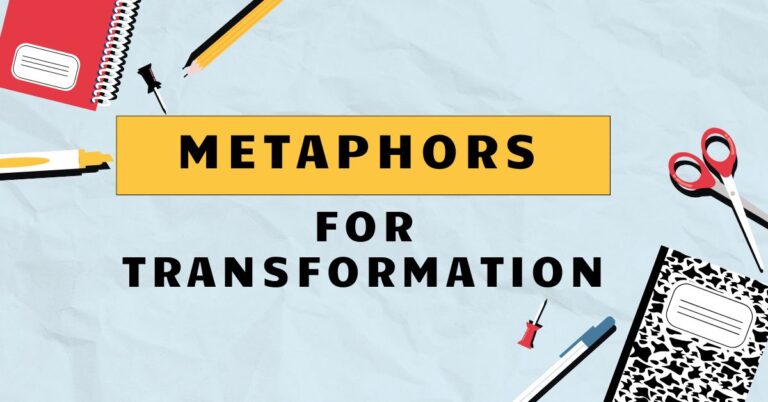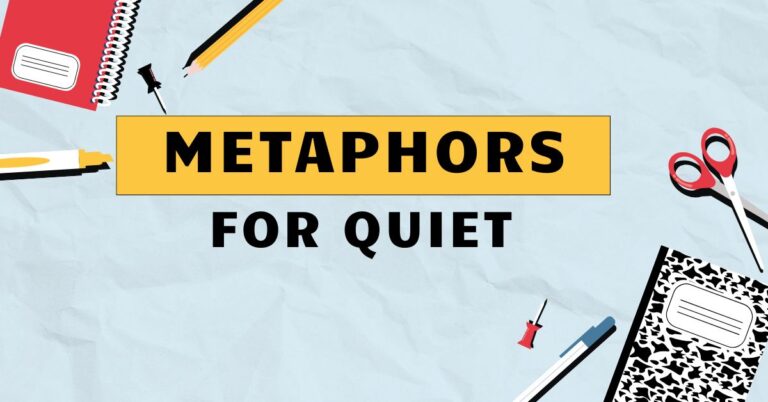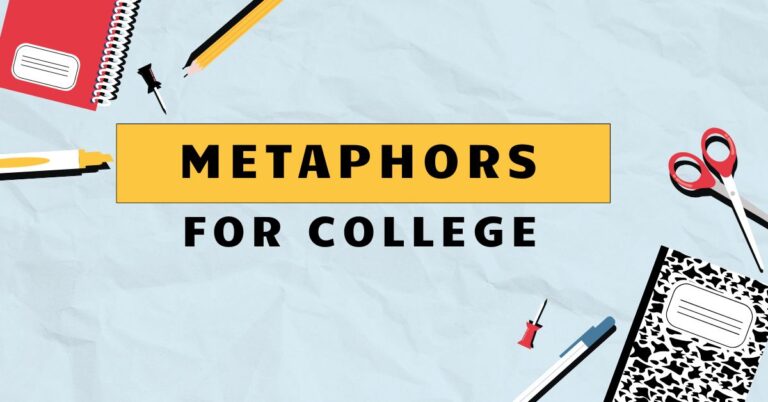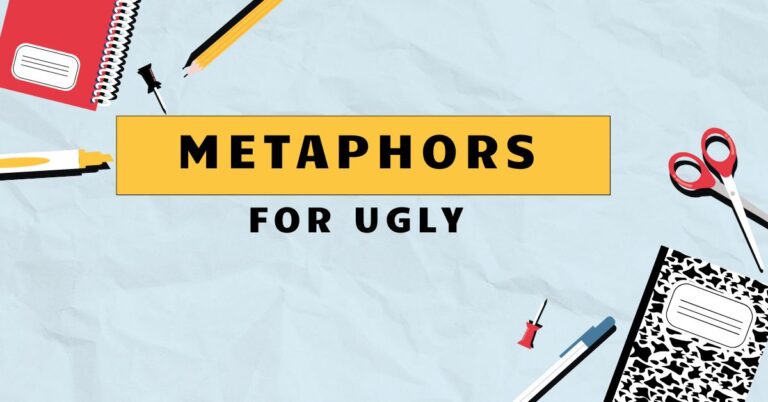49 Metaphors for Perfection: Achieving Excellence in English
Understanding metaphors for “perfect” is crucial for nuanced communication and appreciating the richness of the English language. Metaphors allow us to express abstract ideas like perfection in vivid and relatable ways, enhancing both our writing and comprehension.
This article explores various metaphors used to describe perfection, their structural elements, usage rules, and common mistakes. Whether you’re an ESL student, a seasoned writer, or simply someone looking to improve your grasp of English, this guide will equip you with the tools to recognize and employ these metaphors effectively, refining your ability to convey precision and excellence.
Table of Contents
- Introduction
- Definition of Metaphors for Perfection
- Structural Breakdown of Metaphors
- Types and Categories of Metaphors for Perfection
- Examples of Metaphors for Perfection
- Usage Rules for Metaphors of Perfection
- Common Mistakes When Using Metaphors for Perfection
- Practice Exercises
- Advanced Topics: Extending Metaphorical Understanding
- Frequently Asked Questions
- Conclusion
Introduction
The concept of “perfection” is subjective and often difficult to articulate directly. Metaphors offer a powerful way to convey this abstract idea by comparing it to something tangible or easily understood.
By using metaphors, we can add depth, color, and emotional resonance to our descriptions of perfection. This article will delve into the diverse range of metaphors used to describe perfection, examining their structure, types, and the nuances of their usage.
Understanding these metaphors is essential for both effective communication and a deeper appreciation of the English language’s expressive capabilities.
This comprehensive guide aims to provide a clear and accessible explanation of how metaphors are used to represent perfection in English. It will be beneficial for learners of all levels, from those just beginning to explore figurative language to advanced speakers looking to refine their writing and speaking skills.
Through detailed explanations, numerous examples, and practical exercises, you’ll gain a solid understanding of how to identify, interpret, and effectively use metaphors for perfection. This mastery will significantly enhance your ability to communicate complex ideas with clarity and impact.
Definition of Metaphors for Perfection
A metaphor is a figure of speech that directly compares two unrelated things, asserting that one thing *is* the other, not just that it is *like* the other (which would be a simile). In the context of perfection, a metaphor uses something concrete or relatable to represent the abstract idea of being flawless, complete, or ideal.
The metaphor works by transferring qualities from the concrete object or idea to the concept of perfection, thereby illuminating it in a new and often more vivid way.
Metaphors for perfection serve several key functions. First, they provide a more engaging and memorable way to describe something that might otherwise seem bland or abstract.
Second, they can add emotional depth and subjective meaning to the concept of perfection. Finally, they can reveal new perspectives and insights into what it means for something to be “perfect.” For example, saying “Her performance was a flawless diamond” implies not only that it was perfect but also that it was precious, brilliant, and enduring.
The use of metaphors for perfection is widespread in literature, everyday conversation, and professional settings. They are used to describe everything from artistic creations and athletic performances to business strategies and personal relationships.
The effectiveness of a metaphor depends on its originality, clarity, and relevance to the context. A well-chosen metaphor can elevate a description, making it more compelling and memorable.
The power of these metaphors lies in their ability to evoke vivid imagery and deeper understanding.
Structural Breakdown of Metaphors
A metaphor consists of two primary elements: thetenorand thevehicle. The tenor is the subject to which the metaphor refers (in this case, perfection), and the vehicle is the object or concept used to represent the tenor.
The vehicle carries the metaphorical meaning and transfers its attributes to the tenor. Understanding this structure is crucial for both creating and interpreting metaphors effectively.
In addition to the tenor and vehicle, thegroundis the shared characteristic or point of comparison between the two. The ground justifies the connection between the tenor and the vehicle, making the metaphor meaningful and understandable.
For example, in the metaphor “His plan was a seamless tapestry,” the tenor is “his plan,” the vehicle is “a seamless tapestry,” and the ground is the idea of being flawlessly constructed and integrated.
The effectiveness of a metaphor also depends on thecontextin which it is used. The context provides the necessary background information for understanding the intended meaning of the metaphor.
Without context, a metaphor can be confusing or misinterpreted. Therefore, it is important to consider the audience, the setting, and the overall purpose of the communication when using metaphors.
Metaphors should resonate with the audience and contribute to the overall message.
Let’s consider the metaphor “Her voice was pure gold.” Here, the tenor is “her voice,” and the vehicle is “pure gold.” The ground lies in the shared characteristics of value, beauty, and purity. Gold is highly valued and considered beautiful, and the metaphor suggests that her voice shares these qualities.
This structure helps to create a powerful and evocative image of the voice being described. Another critical aspect is the novelty of the metaphor.
Overused metaphors lose their impact, becoming clichés. Strive for originality to make your communication more engaging.
Types and Categories of Metaphors for Perfection
Metaphors for perfection can be categorized based on the sensory experiences or abstract concepts they evoke. This classification helps in understanding the different ways perfection can be represented.
The following are some common categories:
Visual Metaphors
Visual metaphors use imagery related to sight to describe perfection. These metaphors often involve ideas of clarity, brightness, or flawless appearance.
They create a strong visual impression in the reader’s mind, making the concept of perfection more tangible.
Auditory Metaphors
Auditory metaphors use sounds to represent perfection. These metaphors often involve ideas of harmony, resonance, or flawless pitch.
They appeal to the sense of hearing, creating a melodic or harmonious image of perfection.
Tactile Metaphors
Tactile metaphors use descriptions of touch to convey perfection. These metaphors often involve ideas of smoothness, texture, or solidity.
They create a sensory experience related to touch, making the concept of perfection more palpable.
Taste Metaphors
Taste metaphors use flavors to represent perfection. These metaphors are less common but can be highly effective when used appropriately.
They often involve ideas of sweetness, richness, or balance of flavors, creating a gustatory image of perfection.
Abstract Metaphors
Abstract metaphors use non-sensory concepts to describe perfection. These metaphors often involve ideas of precision, balance, or completeness.
They rely on conceptual understanding rather than sensory imagery to convey the idea of perfection.
Examples of Metaphors for Perfection
The following tables provide examples of metaphors for perfection, categorized by type. Each example illustrates how a specific sensory experience or abstract concept can be used to represent the idea of being flawless or ideal.
The table below showcases visual metaphors used to describe perfection. These metaphors use images related to sight, such as light, clarity, and flawless appearance, to create a vivid picture of something being perfect.
| Category | Metaphor | Explanation |
|---|---|---|
| Visual | Her smile was a radiant sunrise. | The smile is compared to a sunrise, suggesting warmth, beauty, and perfect beginning. |
| Visual | The painting was a crystal-clear reflection of nature. | The painting perfectly captures the essence of nature without distortion. |
| Visual | His performance was a flawless mirror. | The performance perfectly reflected the original work without any mistakes. |
| Visual | The diamond was a perfect teardrop of light. | The diamond is idealized as a flawless and brilliant object of beauty. |
| Visual | The design was a seamless panorama. | The design flowed together perfectly, creating a unified and complete view. |
| Visual | The garden was an unblemished canvas of green. | The garden is portrayed as a perfect, untouched expanse of natural beauty. |
| Visual | Her skin was a porcelain dream. | Her skin is described as smooth, delicate, and flawless, like porcelain. |
| Visual | The architecture was a pristine vision in white. | The building is seen as immaculate and perfectly designed. |
| Visual | The snow was a flawless blanket over the town. | The snow covers the town perfectly, creating a serene and untouched scene. |
| Visual | The ballet dancer’s movements were liquid grace. | The dancer’s movements were smooth, flowing, and perfectly executed. |
| Visual | The sunset was a vibrant masterpiece. | The sunset is seen as a perfect and colorful work of art. |
| Visual | The photograph captured a moment of pure, unadulterated light. | The photo is praised for its perfect capture of a fleeting moment of brilliance. |
| Visual | The website design was a sleek, modern vision. | The website’s design is considered perfect in its contemporary and streamlined appearance. |
| Visual | The wedding dress was a cloud of white perfection. | The dress is described as ethereal, flawless, and perfectly suited for the occasion. |
| Visual | The arrangement of flowers was a symphony of color. | The flowers are arranged perfectly, creating a harmonious and visually stunning display. |
| Visual | The athlete’s form was a textbook example of perfection. | The athlete’s technique is considered flawless and exemplary. |
| Visual | The product packaging was a minimalist dream. | The packaging is praised for its simplicity, elegance, and perfect design. |
| Visual | The night sky was a tapestry of sparkling jewels. | The stars are seen as perfect and dazzling gems spread across the dark sky. |
| Visual | The garden’s layout was a masterpiece of symmetry. | The garden is perfectly balanced and aesthetically pleasing in its design. |
| Visual | The cake decoration was an immaculate work of art. | The cake is decorated flawlessly, turning it into a beautiful creation. |
| Visual | The building was a towering monument to architectural perfection. | The building is described as an exemplary and flawless architectural achievement. |
| Visual | The model’s pose was a statue come to life. | The model’s pose is praised for its perfect form and lifelike quality. |
| Visual | The landscape was a vision of untouched paradise. | The landscape is seen as pristine, unspoiled, and perfectly beautiful. |
| Visual | The chef’s plating was a culinary painting. | The chef’s presentation of the food is considered a flawless visual masterpiece. |
| Visual | The car’s finish was a mirror reflecting the sky. | The car’s paint is so flawless that it perfectly reflects its surroundings. |
This table presents auditory metaphors for perfection. These use sounds and musical qualities to suggest that something is perfect, harmonious, or flawlessly executed.
| Category | Metaphor | Explanation |
|---|---|---|
| Auditory | Her speech was a symphony of eloquence. | The speech is compared to a symphony, suggesting harmony, beauty, and perfect composition. |
| Auditory | The choir’s performance was a flawless chorus of angels. | The choir’s singing is idealized as perfect and heavenly. |
| Auditory | His guitar solo was a cascade of pure notes. | The solo is described as a flawless and flowing stream of perfect sounds. |
| Auditory | The clock’s chime was a perfect bell. | The chime is described as clear, resonant, and perfectly timed. |
| Auditory | The bird’s song was a flawless melody. | The bird’s singing is portrayed as a perfect and beautiful tune. |
| Auditory | The orchestra played with clockwork precision. | The orchestra’s timing and coordination were flawless and mechanical. |
| Auditory | Her laughter was a silver bell. | Her laughter is described as pure, clear, and perfectly delightful. |
| Auditory | The wind chimes created a symphony of serenity. | The chimes produce a harmonious and peaceful sound. |
| Auditory | His voice was a perfectly tuned instrument. | His voice is described as controlled, resonant, and flawless. |
| Auditory | The applause was a thunderous wave of appreciation. | The applause is loud, overwhelming, and signifies complete approval. |
| Auditory | The rain on the roof was a soothing lullaby. | The sound of rain is gentle, calming, and perfect for inducing sleep. |
| Auditory | The speaker’s tone was a perfect pitch of persuasion. | The speaker’s voice is ideal for convincing others. |
| Auditory | The opera singer’s aria was a flawless vocal flight. | The singer’s performance is described as a perfect and soaring vocal display. |
| Auditory | The DJ’s mix was a seamless blend of beats. | The DJ’s transitions were smooth and flawless. |
| Auditory | The sound system produced crystal-clear audio. | The audio quality is perfect and without distortion. |
| Auditory | The debate was a harmonious exchange of ideas. | The discussion was civil, balanced, and perfectly structured. |
| Auditory | The recording’s quality was audiophile perfection. | The recording is of the highest possible audio quality. |
| Auditory | The choir’s rendition was a Gregorian echo of the divine. | The choir’s singing is portrayed as a perfect and spiritual experience. |
| Auditory | The conference call was a model of clear communication. | The call was perfectly organized and easy to understand. |
| Auditory | The soundproofing created a cocoon of silence. | The soundproofing is so effective that it produces perfect quiet. |
| Auditory | The jazz band’s improvisation was a spontaneous masterpiece. | The band’s impromptu performance is flawless and inspired. |
| Auditory | The podcast’s editing was a testament to seamless production. | The podcast is perfectly edited, with smooth transitions and no errors. |
| Auditory | The theater’s acoustics were an echo chamber of perfection. | The theater’s sound quality is ideal for performances. |
| Auditory | The recording studio was a sanctuary of sonic purity. | The studio is designed to capture perfect and unadulterated sound. |
| Auditory | The speaker’s cadence was a rhythmic dance of words. | The speaker’s pacing and rhythm are perfectly engaging. |
Here’s a table featuring tactile metaphors. These metaphors use descriptions of touch to evoke a sense of perfection, often implying smoothness, texture, or a satisfying physical sensation.
| Category | Metaphor | Explanation |
|---|---|---|
| Tactile | The fabric was a velvet dream. | The fabric is compared to velvet, suggesting smoothness, luxury, and perfect texture. |
| Tactile | The sculpture was a seamless stone. | The sculpture is described as perfectly smooth and without any imperfections. |
| Tactile | Her touch was a feather of comfort. | Her touch is gentle, light, and perfectly comforting. |
| Tactile | The wood was a polished mirror. | The wood is so smooth that it reflects light perfectly. |
| Tactile | The finish was a silken caress. | The finish is described as smooth, luxurious, and perfectly pleasing to the touch. |
| Tactile | The clay was a sculptor’s yielding dream. | The clay is perfect for shaping and molding. |
| Tactile | The water was a liquid blanket of warmth. | The water is comforting, enveloping, and perfectly warm. |
| Tactile | The surface was a glass lake. | The surface is perfectly smooth, clear, and reflective. |
| Tactile | Her skin was a petal’s whisper. | Her skin is delicate, soft, and perfectly smooth. |
| Tactile | The massage was a melting release of tension. | The massage is perfectly relaxing and eliminates all tension. |
| Tactile | The leather was a supple embrace. | The leather is soft, flexible, and perfectly comfortable. |
| Tactile | The sand was a velvet carpet underfoot. | The sand is soft, luxurious, and perfectly smooth to walk on. |
| Tactile | The cushion was a cloud of softness. | The cushion is extremely soft and perfectly comfortable. |
| Tactile | The metal was a flawless ingot. | The metal is perfectly pure and without imperfections. |
| Tactile | The lotion was a silken veil. | The lotion is smooth, light, and perfectly moisturizing. |
| Tactile | The ceramic was a potter’s sleek creation. | The ceramic is perfectly shaped and smooth. |
| Tactile | The ice was a diamond shard. | The ice is pure, clear, and perfectly formed. |
| Tactile | The wool was a comforting hug. | The wool is warm, soft, and perfectly comforting. |
| Tactile | The stone was a sculptor’s perfect medium. | The stone is ideal for carving and shaping. |
| Tactile | The wax was a candle’s smooth tear. | The wax drips smoothly and perfectly down the candle. |
| Tactile | The paper was a calligrapher’s dream surface. | The paper is perfectly smooth and suited for calligraphy. |
| Tactile | The sealant was a flawless shield. | The sealant provides perfect protection and is without imperfections. |
| Tactile | The balm was a soothing touch of relief. | The balm is perfectly comforting and provides immediate relief. |
| Tactile | The polish was a mirror’s gleam. | The polish is so smooth that it reflects light perfectly. |
| Tactile | The fabric’s weave was a tapestry of perfection. | The fabric is perfectly woven and without any flaws. |
Usage Rules for Metaphors of Perfection
Using metaphors effectively requires a careful consideration of several factors. First, the metaphor should beappropriatefor the context and the audience.
A metaphor that works well in one situation may be confusing or inappropriate in another. The audience’s background and understanding should also be taken into account.
A metaphor that is too obscure or culturally specific may not be easily understood.
Second, the metaphor should beoriginalandvivid. Overused metaphors become clichés and lose their impact.
A fresh and imaginative metaphor can capture the reader’s attention and create a more memorable impression. The metaphor should also be vivid, creating a clear and compelling image in the reader’s mind.
The goal is to paint a picture with words that resonates with the audience.
Third, the metaphor should beconsistentandlogical. Avoid mixing metaphors or creating illogical comparisons.
A mixed metaphor can be confusing and detract from the overall message. The comparison should make sense and be grounded in shared characteristics between the tenor and the vehicle.
Consistency is key to maintaining clarity and credibility.
Finally, the metaphor should be usedsparingly. Overusing metaphors can make the writing seem forced or artificial.
Metaphors are most effective when used strategically to highlight key points or add emotional depth. Too many metaphors can overwhelm the reader and detract from the overall clarity of the message.
Balance is essential in using metaphors effectively.
Common Mistakes When Using Metaphors for Perfection
One common mistake is usingclichéd metaphors. Phrases like “as good as gold” or “picture perfect” have lost their impact due to overuse.
Instead, strive for originality and create fresh comparisons that will capture the reader’s attention. Using a fresh metaphor can revitalize your writing and make it more engaging.
Avoiding clichés is crucial for effective communication.
Another mistake ismixing metaphors. For example, saying “He steered the ship of state through a sea of troubles, but the writing was on the wall” combines two unrelated metaphors, creating a confusing and illogical image.
Keep your metaphors consistent and avoid combining unrelated images. Clarity is essential for effective communication.
A third mistake is using metaphors that areinappropriatefor the context. For example, using a highly technical metaphor in a casual conversation can be confusing or off-putting.
Consider your audience and the setting when choosing a metaphor. The metaphor should be relevant and easily understood by the intended audience.
Appropriateness is key to effective communication.
Finally, avoid using metaphors that aretoo abstractorobscure. The metaphor should be clear and easily understood.
If the reader has to struggle to understand the comparison, the metaphor is not effective. Choose metaphors that are relatable and grounded in shared experiences.
Clarity is essential for effective communication.
The following table presents examples of common mistakes when using metaphors, showing both the incorrect and corrected versions to illustrate how to avoid these errors.
| Category | Incorrect Metaphor | Corrected Metaphor | Explanation |
|---|---|---|---|
| Cliché | Her performance was as good as gold. | Her performance was a flawless diamond. | Replaced the clichéd “as good as gold” with a more original metaphor. |
| Mixed Metaphor | He was climbing the ladder of success while burning the midnight oil. | He was climbing the ladder of success with relentless determination. | Removed the unrelated “burning the midnight oil” metaphor for clarity. |
| Inappropriate | The algorithm’s efficiency was a quantum leap. (in casual conversation) | The algorithm’s efficiency was a significant improvement. (in casual conversation) | Replaced the technical metaphor with a more accessible term. |
| Too Abstract | The solution was a fractal of understanding. | The solution was a complete and comprehensive understanding. | Simplified the abstract metaphor for better comprehension. |
| Overuse | The project was a marathon, a sprint, and a climb all rolled into one. | The project was a challenging and demanding undertaking. | Replaced multiple metaphors with a simple and direct statement. |
| Illogical | The company’s strategy was a blind date with destiny. | The company’s strategy was a calculated risk with potential rewards. | Replaced the illogical comparison with a more rational description. |
| Confusing | The presentation was a kaleidoscope of ideas. | The presentation was a diverse and engaging collection of ideas. | Clarified the metaphor to improve understanding. |
| Inconsistent | The plan was a fortress, but it needed to be flexible. | The plan was robust, but it needed to be flexible. | Replaced the conflicting metaphor with a more appropriate adjective. |
Practice Exercises
The following exercises will help you practice identifying and using metaphors for perfection. For each sentence, identify the metaphor used to describe perfection (if any) and explain its meaning.
If there is no metaphor, suggest one that could be used to enhance the sentence.
Exercise 1: Identifying Metaphors
| Question | Answer |
|---|---|
| 1. Her singing voice was perfect. | No metaphor. Possible metaphor: Her singing voice was a crystal stream. |
| 2. The athlete’s performance was a flawless symphony of motion. | Metaphor: Flawless symphony of motion. Meaning: The performance was perfectly coordinated and harmonious. |
| 3. The cake was delicious. | No metaphor. Possible metaphor: The cake was a slice of heaven. |
| 4. The project was a seamless tapestry of collaboration. | Metaphor: Seamless tapestry of collaboration. Meaning: The project was perfectly integrated and well-coordinated. |
| 5. The painting was beautiful. | No metaphor. Possible metaphor: The painting was a vibrant window to another world. |
| 6. His presentation was a polished gem. | Metaphor: Polished gem. Meaning: The presentation was perfectly refined and valuable. |
| 7. The solution was simple. | No metaphor. Possible metaphor: The solution was a laser beam of clarity. |
| 8. The garden was an immaculate paradise. | Metaphor: Immaculate paradise. Meaning: The garden was perfectly maintained and beautiful. |
| 9. The design was elegant. | No metaphor. Possible metaphor: The design was a swan’s graceful curve. |
| 10. The dance was a fluid dream. | Metaphor: Fluid dream. Meaning: The dance was perfectly smooth and graceful. |
Exercise 2: Using Metaphors
Rewrite the following sentences using metaphors to describe perfection.
| Question | Answer |
|---|---|
| 1. The sunset was very beautiful. | The sunset was a blazing canvas of color. |
| 2. Her explanation was very clear. | Her explanation was a crystal-clear stream of understanding. |
| 3. The music was very harmonious. | The music was a perfect harmony of the spheres. |
| 4. The craftsmanship was excellent. | The craftsmanship was a testament to flawless artistry. |
| 5. The plan was perfectly executed. | The plan was a symphony of flawless execution. |
| 6. The meal was delicious. | The meal was a culinary masterpiece. |
| 7. The garden was perfectly maintained. | The garden was an emerald jewel, meticulously cared for. |
| 8. The speech was very persuasive. | The speech was a golden arrow of persuasion. |
| 9. The performance was flawless. | The performance was a flawless diamond, sparkling with brilliance. |
| 10. The design was perfectly balanced. | The design was a harmonious equilibrium of form and function. |
Advanced Topics: Extending Metaphorical Understanding
For advanced learners, exploring the concept ofextended metaphorscan significantly enhance their understanding. An extended metaphor is a metaphor that is developed over several lines or even throughout an entire work.
It allows for a more detailed and nuanced comparison, providing deeper insights into the subject being described.
Another advanced topic is the use ofmixed metaphorsfor stylistic effect. While traditionally considered an error, skilled writers can sometimes use mixed metaphors intentionally to create a sense of confusion, humor, or irony.
However, this technique should be used sparingly and with careful consideration to avoid confusing the reader.
Additionally, exploring thecultural contextof metaphors can provide valuable insights. Metaphors are often rooted in cultural experiences and beliefs, and understanding these cultural nuances can enhance the interpretation and appreciation of literature and other forms of communication.
Different cultures may have different metaphors for perfection, reflecting their unique values and perspectives.
Finally, advanced learners can benefit from studying thehistorical evolutionof metaphors. Many common metaphors have evolved over time, and understanding their historical origins can provide a deeper appreciation of their meaning and usage.
Tracing the etymology of metaphors can reveal fascinating insights into the history of language and culture.
Frequently Asked Questions
- What is the difference between a metaphor and a simile?
A metaphor directly equates two unlike things, stating that one *is* the other (e.g., “Her voice was pure gold”). A simile, on the other hand, uses “like” or “as” to compare two things (e.g., “Her voice was *like* pure gold”). Metaphors are generally considered more powerful and direct than similes.
- How can I avoid using clichéd metaphors?
The best way to avoid clichéd metaphors is to think creatively and look for fresh and original comparisons. Brainstorm different ways to describe the subject, and try to find connections that are not immediately obvious. Reading widely and exposing yourself to new ideas can also help you develop a more imaginative approach.
- Is it always wrong to mix metaphors?
Generally, yes, mixing metaphors should be avoided as it can lead to confusion and illogical comparisons. However, skilled writers may sometimes use mixed metaphors intentionally for stylistic effect, such as to create humor or irony. This should be done sparingly and with careful consideration to avoid confusing the reader.
- How do I choose the right metaphor for a particular context?
Consider your audience, the setting, and the overall purpose of your communication. The metaphor should be relevant, easily understood, and appropriate for the context. It should also be consistent with the tone and style of your writing or speaking.
- Can metaphors be used in technical writing?
Yes, metaphors can be used in technical writing, but they should be used sparingly and with caution. The goal is to clarify complex concepts, not to confuse the reader. Choose metaphors that are familiar and easily understood by the target audience, and avoid using highly abstract or obscure comparisons.
- How can I improve my ability to understand metaphors?
Read widely and pay attention to the metaphors used by skilled writers and speakers. Practice identifying the tenor, vehicle, and ground of different metaphors, and consider how they contribute to the overall meaning of the text. Also, be aware of cultural and historical contexts that may influence the interpretation of metaphors.
- Are there any specific types of metaphors that are particularly effective for describing perfection?
Visual and auditory metaphors are often effective for describing perfection, as they appeal to the senses and create vivid images in the reader’s mind. Metaphors that evoke ideas of clarity, harmony, and balance can also be particularly effective. Ultimately, the best metaphor will depend on the specific context and the subject being described.
- What is the role of culture in understanding metaphors?
<Culture plays a significant role in understanding metaphors because metaphors are often rooted in cultural experiences, values, and beliefs. Different cultures may have different ways of conceptualizing abstract ideas like perfection, and these differences can be reflected in the metaphors they use. For example, a culture that values harmony and balance may use metaphors related to music or nature to describe perfection, while a culture that values precision and efficiency may use metaphors related to technology or engineering.
- How can understanding metaphors improve my writing?
Understanding metaphors can significantly improve your writing by allowing you to express complex ideas in a more vivid, engaging, and memorable way. By using metaphors effectively, you can add depth, color, and emotional resonance to your descriptions, making your writing more compelling and persuasive. Metaphors can also help you reveal new perspectives and insights into the subject you are writing about, enriching the overall meaning of your work.
- Where can I find more examples of metaphors for perfection?
You can find more examples of metaphors for perfection in literature, poetry, song lyrics, and everyday conversation. Pay attention to the language used by skilled writers and speakers, and look for patterns and recurring themes. Online resources such as literary databases and style guides can also provide valuable examples and insights.
Conclusion
Mastering the use of metaphors for perfection is a valuable skill for anyone looking to enhance their communication abilities in English. By understanding the structure, types, and usage rules of these metaphors, you can add depth, color, and emotional resonance to your writing and speaking.
Avoiding common mistakes and practicing regularly will further refine your skills, allowing you to express complex ideas with clarity and impact.
As you continue to explore the world of metaphors, remember that creativity and originality are key. Strive to find fresh and imaginative comparisons that will capture the reader’s attention and create a lasting impression.
Embrace the power of figurative language to elevate your communication and unlock new levels of expression. Through diligent practice and a keen eye for detail, you can master the art of using metaphors for perfection and achieve excellence in your use of the English language.

